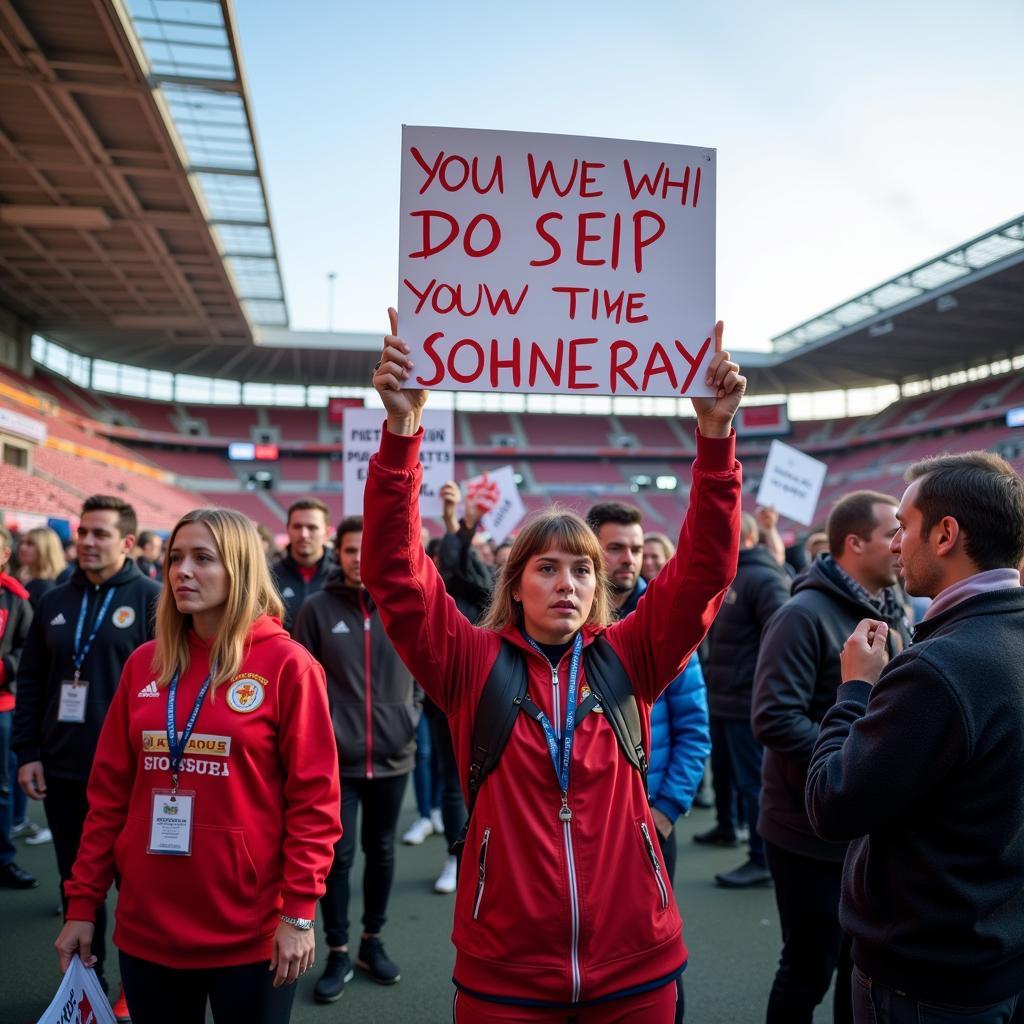The term “fan owner” might sound unusual at first, but it represents a growing trend in the world of football: fan ownership. Simply put, a “fan owner” is an individual who, along with other fans, collectively holds a stake in their beloved football club. This ownership can range from a symbolic share to having a real say in the club’s decisions, depending on the model implemented.
 Fan Ownership Models
Fan Ownership Models
The Rise of the Fan Owner
The concept of fan ownership isn’t entirely new. It has its roots in the early days of football when clubs were often formed by local communities. However, recent decades have seen a surge in this model, driven by various factors. Many fans feel increasingly disconnected from clubs owned by wealthy individuals or corporations, who may prioritize profit over the club’s traditions and fans’ desires.
Fan ownership offers a compelling alternative, promising greater transparency, accountability, and a stronger connection between the club and its supporters. This model has gained traction across Europe, with clubs like FC Barcelona in Spain, Bayern Munich in Germany, and Hearts of Midlothian in Scotland showcasing successful examples.
How Fan Ownership Works: From Symbolic Shares to Decisive Votes
The structure of fan ownership varies significantly from club to club. In some cases, fans might own a small percentage of the club through a supporters’ trust, granting them certain rights, such as electing fan representatives to the board or having a voice on key issues.
 Fans Participating in Club Decisions
Fans Participating in Club Decisions
Other clubs operate under a socio model, where fans hold the majority ownership. This model, famously employed by Real Madrid and FC Barcelona, gives supporters significant control over the club’s direction.
The Benefits of Being a Fan Owner: More Than Just a Fan
The appeal of being a fan owner extends beyond the romantic notion of “owning a piece of your club.” It empowers fans to actively participate in shaping their club’s destiny.
- Influence on Club Decisions: Fan owners can influence ticket prices, stadium upgrades, or even managerial appointments, ensuring the club reflects their values and aspirations.
- Financial Stability: Fan ownership can provide a financial safety net for clubs, preventing reckless spending and promoting sustainable growth.
- Community Building: It fosters a strong sense of community, uniting fans under a common goal and strengthening the bond between the club and its supporters.
The Challenges of Fan Ownership: Navigating Complexities
While the concept seems ideal, fan ownership isn’t without its challenges.
- Decision-Making Processes: Reaching a consensus among a large and diverse fanbase can be challenging and time-consuming.
- Financial Limitations: Fan-owned clubs might face limitations in competing financially with wealthier rivals in the transfer market or infrastructure investments.
- Internal Conflicts: Disagreements within the fanbase can lead to internal conflicts and instability within the club.
 Fans Protesting Against a Controversial Decision
Fans Protesting Against a Controversial Decision
The Future of Fan Ownership: A Growing Movement
Despite the challenges, the fan ownership model is gaining momentum globally. More fans are recognizing the power of collective ownership in safeguarding their clubs’ interests and ensuring a sustainable future. As the movement continues to evolve, it has the potential to reshape the landscape of football governance, giving fans a more prominent voice and fostering a deeper connection between clubs and their communities.


